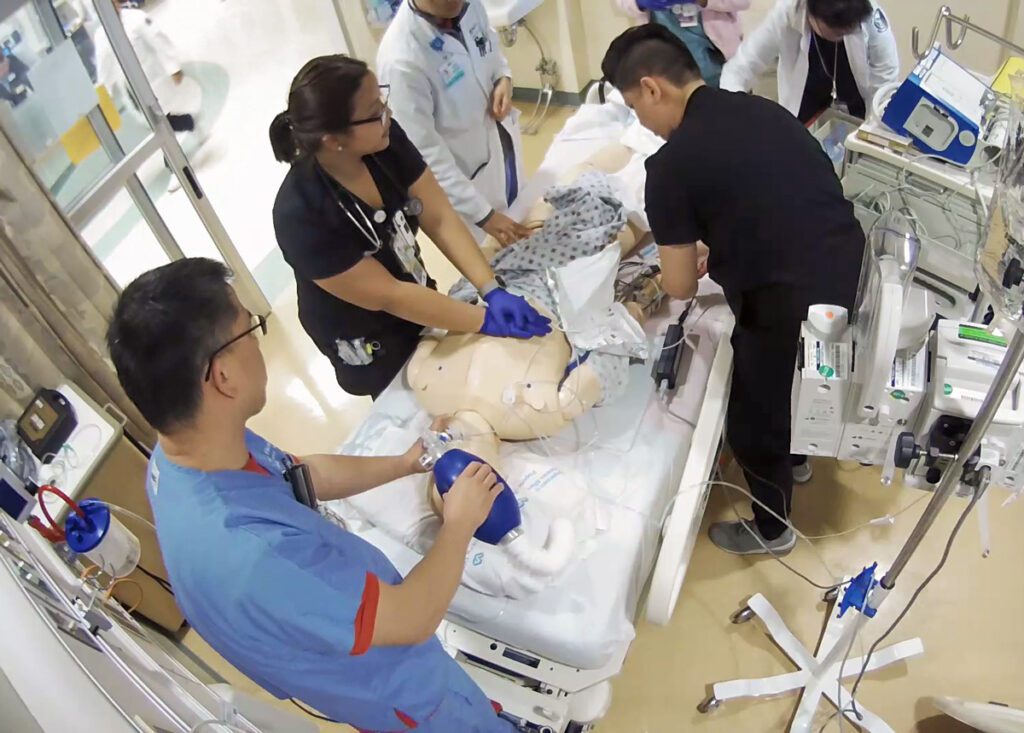Medical schools and hospitals have long valued simulation in healthcare as an instructional tool because it allows learners to practice various clinical skills, procedures, and competencies under controlled consequence-free conditions before they implement these practices in real-life scenarios.
As technology continues to advance and new forms of healthcare simulation training become available, it is critical that healthcare educators stay abreast of ways this vital form of training evolves to ensure their learners are benefiting and creating better health outcomes for their current and future patients.
Evolving Simulation Training Environments
Since the COVID-19 crisis, it has become increasingly clear that physical locations involved in the delivery of healthcare will have to evolve in order to cater to a wide variety of patient needs. Whether it’s care at home, telemedicine, in-person retail healthcare, or virtual therapy, the diverse physical environments in which healthcare occurs has dramatically shifted and should be reflected in evolving training environments.
In addition to the continued use of traditional sim centers, current technology is allowing healthcare simulation to be deployed in locations where it would have been cost-prohibitive to do so in the past. Small mobile simulation units can bring simulation training to hospitals with limited space for training, medical schools looking to insert students into more realistic scenarios, and military medical personnel training in simulated battlefield scenarios.
Likewise, virtual training environments empower healthcare educators to connect with and train learners anywhere, anytime. This training flexibility creates opportunities for higher ed institutions to expand their student base and accelerate the speed of education as they aren’t as dependent on physical resources that can create instructional bottlenecks.
Multi-Stream Assessment Tracking for Healthcare Simulation
The ability to measure simulation competencies is an important step toward improving the effectiveness of healthcare education outcomes. However, there is no single assessment tool that can measure all competencies. A variety of tools are needed to assess different abilities such as communication, medical skills, and clinical knowledge. The best assessment tool for one competency may not be the best for another; therefore institutions must select appropriate tools based on what they want to assess and how they plan on evaluating these aspects of healthcare training.
Ultimately, removing these assessment data silos and getting a holistic view of learner performance is critical in determining the preparedness of learners for real-world practice. New competency assessment software can help educators analyze learning performance across all their assessment systems, and give them a 360 degree view of learner performance by tracking skills and competencies across their entire curricula. This all-encompassing view gives valuable insight not only into learner performance, but also gauges the effectiveness of the program itself, leading to better curriculum optimization.
The Integration of Emerging Technologies into Healthcare Simulation Training
The continued rise of technologies like virtual reality, augmented reality and mixed reality will provide healthcare learners with fully immersive environments allowing for more life-like simulations. This will permit more and more learners to practice skills in settings that mirror real-world situations, which is critical for preparing students for their careers as well as keeping current practitioners’ skills sharp and up-to-date.
Simulation tools are already being used by some medical schools and hospitals as part of their training curricula, but they are limited by the cost, availability, and capability of these devices. With new technologies on the horizon such as AI-powered cloud computing, there is an opportunity to expand these programs beyond what is currently possible with current limitations such as space constraints and limited access to technology.
How Institutions Can Prepare for the Future
Having a plan for how you will incorporate new technologies into your curriculum, and making sure it’s realistic and achievable within the time frame of your institution’s current curriculum development cycle is vital. A key component in this planning process is making sure your existing equipment is compatible and able to communicate with new equipment. Hardware and software agnostic technology solutions that link your disparate systems are critical to this process.
In addition, making sure instructors are ready to use and get the most out of any incorporated technologies will ensure the maximum amount of instructional benefit is passed on to learners. Ensuring partnerships with solution providers that provide not only support, but also ongoing insight and instruction into how to best use their offerings, will ultimately enhance learning outcomes.
The Bright Future Simulation in Healthcare Education
There are a number of factors that will inform the future of simulation in healthcare education, but the growing need for healthcare practitioners and an increased demand for diverse training and delivery methods will be the primary drivers behind this evolution.
Regardless of how simulation training evolves, it will continue to be an important part of healthcare education. Whether it’s through new technologies or improved assessment tools, this type of training will be essential in the preparation of current and future healthcare professionals.


